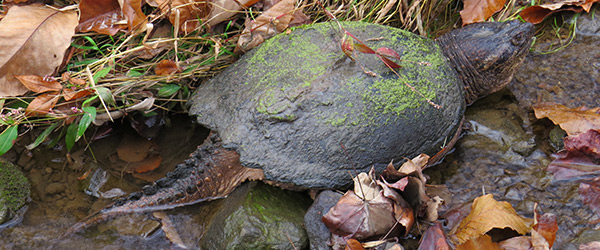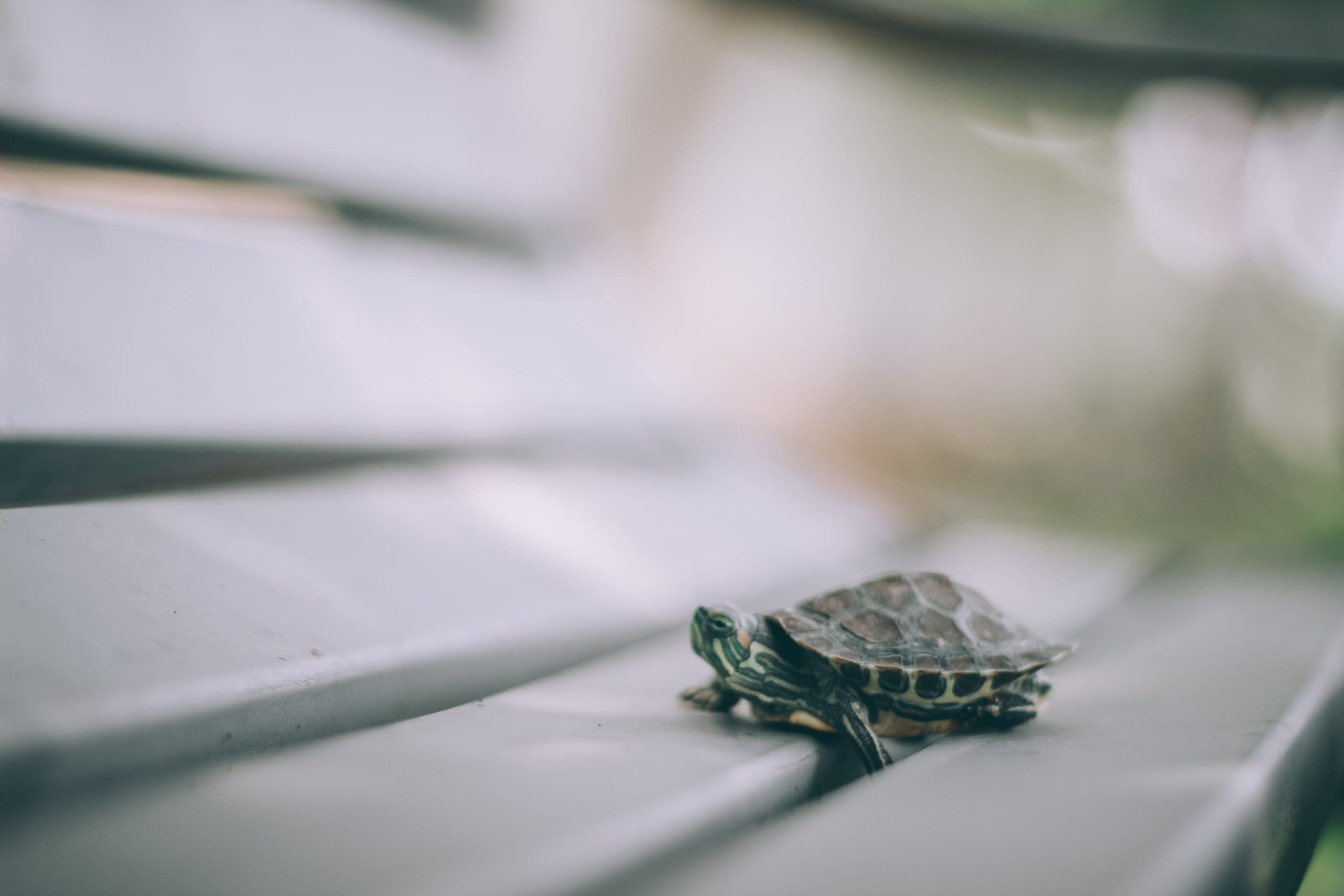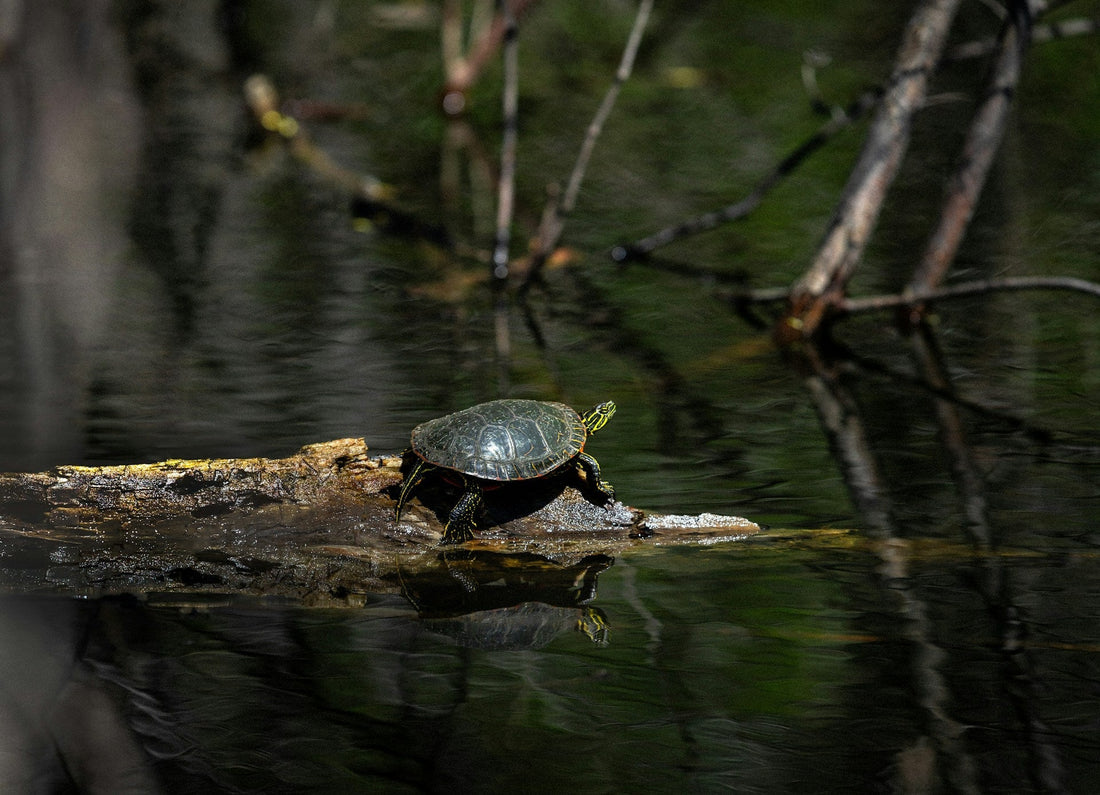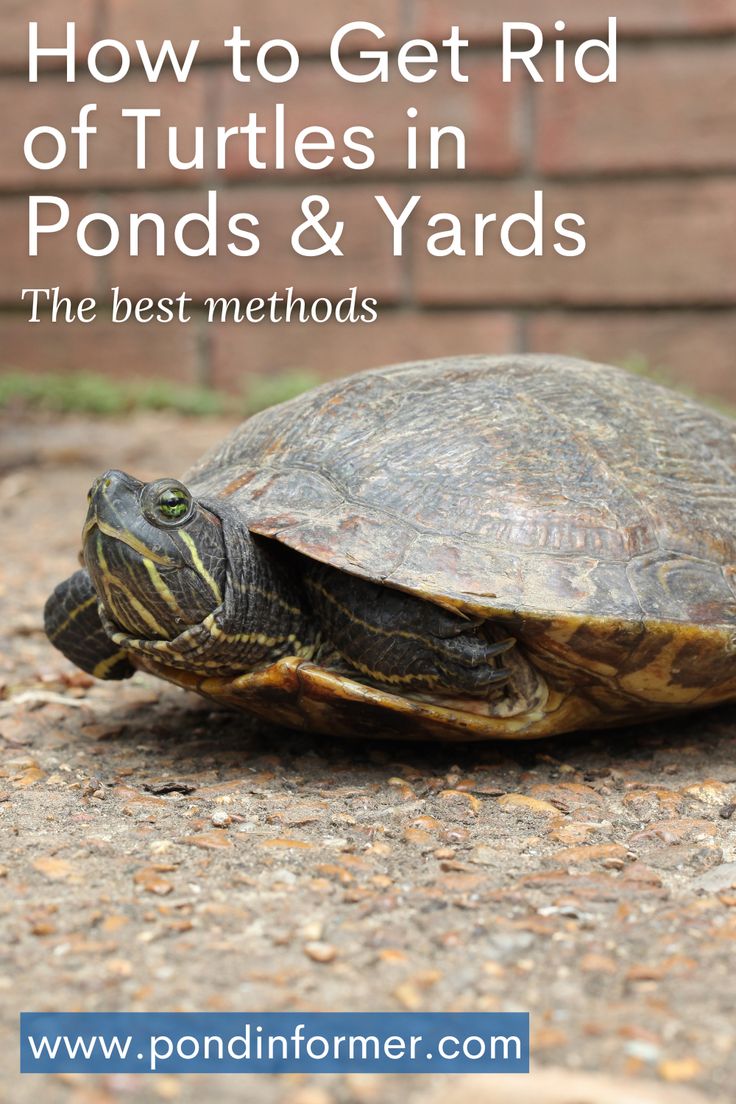To get rid of turtles in a pond, install a turtle trap or use a physical barrier. Turtles can be removed humanely without causing harm to them.
If you are facing issues with turtles in your pond, implementing these methods can help maintain the balance of your pond ecosystem. It is essential to address the turtle population in a way that is safe for both the turtles and the environment.
By following these steps, you can effectively manage and control the turtle population in your pond, ensuring a healthy and thriving aquatic habitat for all inhabitants.
Identifying The Turtle Issue
In a pond, look for turtle nests on the shore or basking turtles on rocks.
Check for scratch marks on vegetation and muddy areas near the water’s edge.
Understanding The Impact Of Turtles On Pond Ecosystem
Turtles can disturb aquatic plants and prey on fish, disrupting the balance.
Monitor water quality for signs of turtle waste affecting pond health.
Natural Deterrents
When it comes to getting rid of turtles in a pond, natural deterrents can be an effective and environmentally friendly solution. Instead of using harmful chemicals or traps, consider implementing natural methods to discourage turtles from inhabiting your pond.
Introducing Predator Fish
Predator fish such as largemouth bass and northern pike can be introduced to the pond to help control the turtle population. These fish are natural predators of turtles and can effectively reduce their numbers over time. Ensure that the predator fish are compatible with the existing ecosystem and won’t cause harm to other aquatic life in the pond.
Implementing Turtle Traps
Another method to deter turtles from the pond is to implement turtle traps. These traps can be strategically placed in areas where turtles are known to frequent, and they work by capturing the turtles without causing harm. Once captured, the turtles can be relocated to a more suitable habitat away from the pond.
Physical Barriers
Turtles can be a delightful addition to your pond, but if their population grows too large, they can disrupt the ecosystem. Implementing physical barriers is an effective way to manage the presence of turtles in your pond. These barriers can prevent turtles from accessing the pond and help control their numbers. Here are some methods to consider:
Installing Fencing Or Netting
Installing fencing or netting around the perimeter of the pond can be an excellent way to keep turtles out. Ensure that the fencing or netting is buried underground to prevent turtles from burrowing underneath it. Opt for sturdy materials that are not easily damaged by the turtles’ claws. Regularly inspect and maintain the fencing or netting to ensure its effectiveness.
Creating Basking Platforms For Turtles
Another approach to deter turtles from your pond is to provide alternative basking platforms. Constructing floating basking platforms in the pond can draw the turtles away from the main area. These platforms can be made from materials such as wood or plastic and should be large enough to accommodate multiple turtles. Placing the platforms in sunny areas can attract the turtles and discourage them from lingering around the pond’s edges.

Credit: www.aaanimalcontrol.com
Habitat Modification
To get rid of turtles in a pond, habitat modification can be effective. Removing vegetation, adding barriers, and changing the pond’s layout can discourage turtles from staying. Additionally, installing a turtle trap can help in relocating them to a more suitable habitat.
If you’re dealing with unwanted turtles in your pond, one of the most effective ways to get rid of them is to modify their habitat. There are several ways to do this, including adjusting water depth and features, and utilizing turtle-repellent plants. Let’s explore these methods in detail.Adjusting Water Depth And Features
One of the easiest ways to make your pond less attractive to turtles is to adjust the water depth and features. Turtles like to bask in the sun, so if you make the water too deep or add too many features, such as rocks or logs, they may be less likely to hang around. Here are some tips for adjusting your pond:- Keep the water level low
- Remove any shallow areas where turtles can bask
- Limit the number of rocks and logs in the pond
- Add a waterfall or fountain to keep the water moving
Utilizing Turtle-repellent Plants
Another way to modify your pond’s habitat is to use plants that repel turtles. These plants have a strong odor that turtles find unpleasant, making them less likely to stick around. Here are some examples of turtle-repellent plants:| Plant Name | Characteristics |
|---|---|
| Basil | Strong smell |
| Marigold | Bitter taste and strong smell |
| Garlic | Strong smell |
| Mint | Strong smell |
Professional Assistance
The process of getting rid of turtles in your pond can be quite challenging, and sometimes it may require the assistance of professionals. Seeking help from experts can ensure that you get the best advice and the right solutions to your turtle problems. Here are some ways you can seek professional assistance to help you get rid of turtles in your pond.
Seeking Guidance From Environmental Agencies
If you are looking for ways to get rid of turtles in your pond, you can consider seeking guidance from environmental agencies. These agencies have a wealth of information on how to deal with turtle infestations and can provide you with the best advice on how to manage your pond. They can also guide you on the best practices to follow to ensure that you do not harm the turtles or your pond’s ecosystem.
Consulting Pond Management Experts
You can also seek the advice of pond management experts who have years of experience dealing with turtle infestations. These experts can provide you with customized solutions to your turtle problems, depending on the size and depth of your pond. They can also advise you on the best methods to use to get rid of the turtles without harming them or disrupting your pond’s ecosystem.
Professional assistance is vital when it comes to getting rid of turtles in your pond. Seeking guidance from environmental agencies and consulting pond management experts can help you get the best solutions to your turtle problems. With their help, you can ensure that your pond remains healthy and free from turtle infestations.

Credit: pondmedics.com
Ethical Considerations
When dealing with the issue of removing turtles from a pond, ethical considerations play a crucial role in ensuring the well-being of the wildlife. It is important to approach turtle removal with respect for wildlife conservation laws and using humane methods to safeguard the turtles’ welfare.
Respecting Wildlife Conservation Laws
Respecting wildlife conservation laws is paramount when addressing the presence of turtles in a pond. It is essential to comply with local and federal regulations regarding the handling and relocation of turtles. Before taking any action, it is advisable to research and understand the specific laws and regulations pertaining to the removal of turtles in the respective area.
Ensuring Humane Turtle Removal Methods
When aiming to remove turtles from a pond, it is imperative to employ humane methods that prioritize the well-being of these creatures. Utilizing techniques such as gentle trapping and carefully relocating the turtles to a suitable habitat can help ensure their safety. Additionally, seeking guidance from wildlife experts or conservation organizations can provide valuable insights into the most humane practices for turtle removal.
Long-term Maintenance
Long-term maintenance is crucial to keeping your pond free from turtles and maintaining a healthy ecosystem. By implementing regular monitoring and sustainable practices, you can ensure that your pond remains turtle-free and balanced for the long term.
Monitoring And Regular Pond Maintenance
Regular monitoring of your pond is essential to detect any signs of turtle activity. This can be achieved by visually inspecting the pond and its surroundings for any turtle sightings or evidence of their presence. Additionally, installing motion-activated cameras near the pond can provide valuable insight into turtle behavior and aid in identifying potential entry points.
Sustaining A Balanced Ecosystem
Maintaining a balanced ecosystem is key to deterring turtles from inhabiting your pond. This can be achieved by introducing natural predators of turtles, such as certain species of fish or birds, to the pond. Additionally, incorporating aquatic plants and maintaining proper water quality can create an environment that is less hospitable to turtles, thus reducing the likelihood of their presence.
Educational Outreach
Raising Awareness In The Community
Spread the word about turtle conservation through workshops and seminars.
- Teach community members about the importance of preserving turtle habitats.
- Highlight the role turtles play in the ecosystem.
Promoting Coexistence With Wildlife
Encourage practices that allow turtles and humans to live harmoniously.
- Implement turtle-friendly landscaping techniques.
- Advocate for responsible pet ownership to prevent turtle disturbances.

Credit: www.livingwateraeration.com
Conclusion
Removing turtles from your pond requires patience and proper techniques. By using physical barriers or traps, you can effectively manage turtle populations. Remember to consider ethical and legal implications when dealing with wildlife. Maintaining a balance between nature and human intervention is key for a harmonious ecosystem.





Leave a Reply